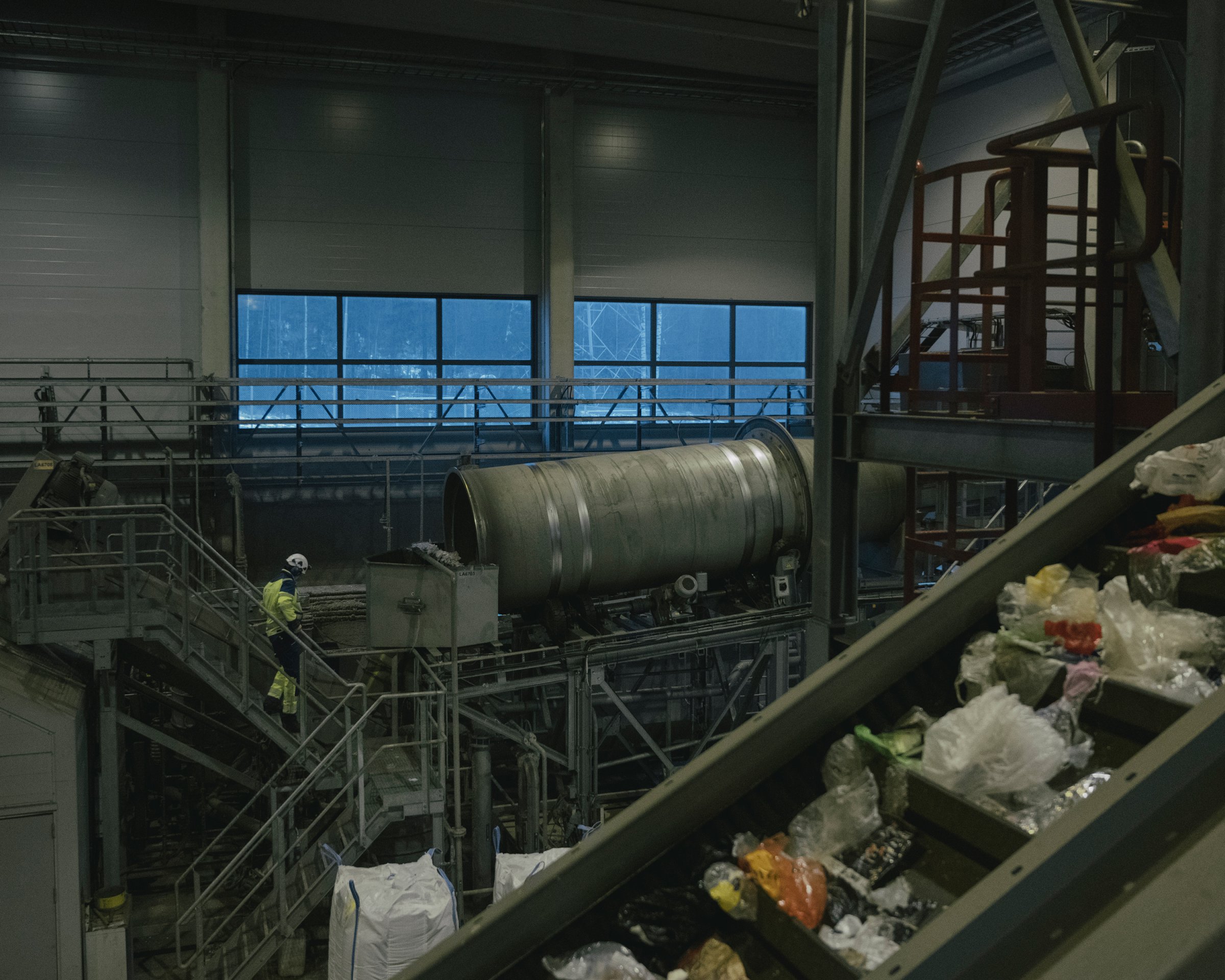On a drizzly December morning that turned Helsinki’s ice-slicked streets even more treacherous, 11-year-old Minh Anh Ho sat safely indoors, hunched over a microscope. The rest of her classmates were occupied with different tasks: interviewing the mayor for the local news station, overseeing the electric company, stocking the shelves of the local grocery store. But as a researcher for a company called Borealis that repurposes plastic, she was busy analyzing the sheet of cling film that lay beneath her lens. “I think it’s a really important job,” she said. “Plastic takes a really long time to disappear, so it would be good to come up with something else to do with it and not just throw it away.”
Yrityskyla, the learning center where Ho and her class were spending the day, is designed to introduce Finnish schoolchildren to working life. In one of 13 centers spread throughout the country and sponsored by a consortium that includes the Confederation of Finnish Industries and the Finnish government, they run a simulacrum of a town, with each student performing a job in a different business (all of them based on real-life companies), from banking to health care to fashion design. The program was launched in 2010, and today roughly 83% of all sixth-graders go through it each year. And since 2017, their day at Yrityskyla has included not just experiential lessons on entrepreneurship and progressive taxation but also, as Ho’s “job” makes clear, the circular economy.
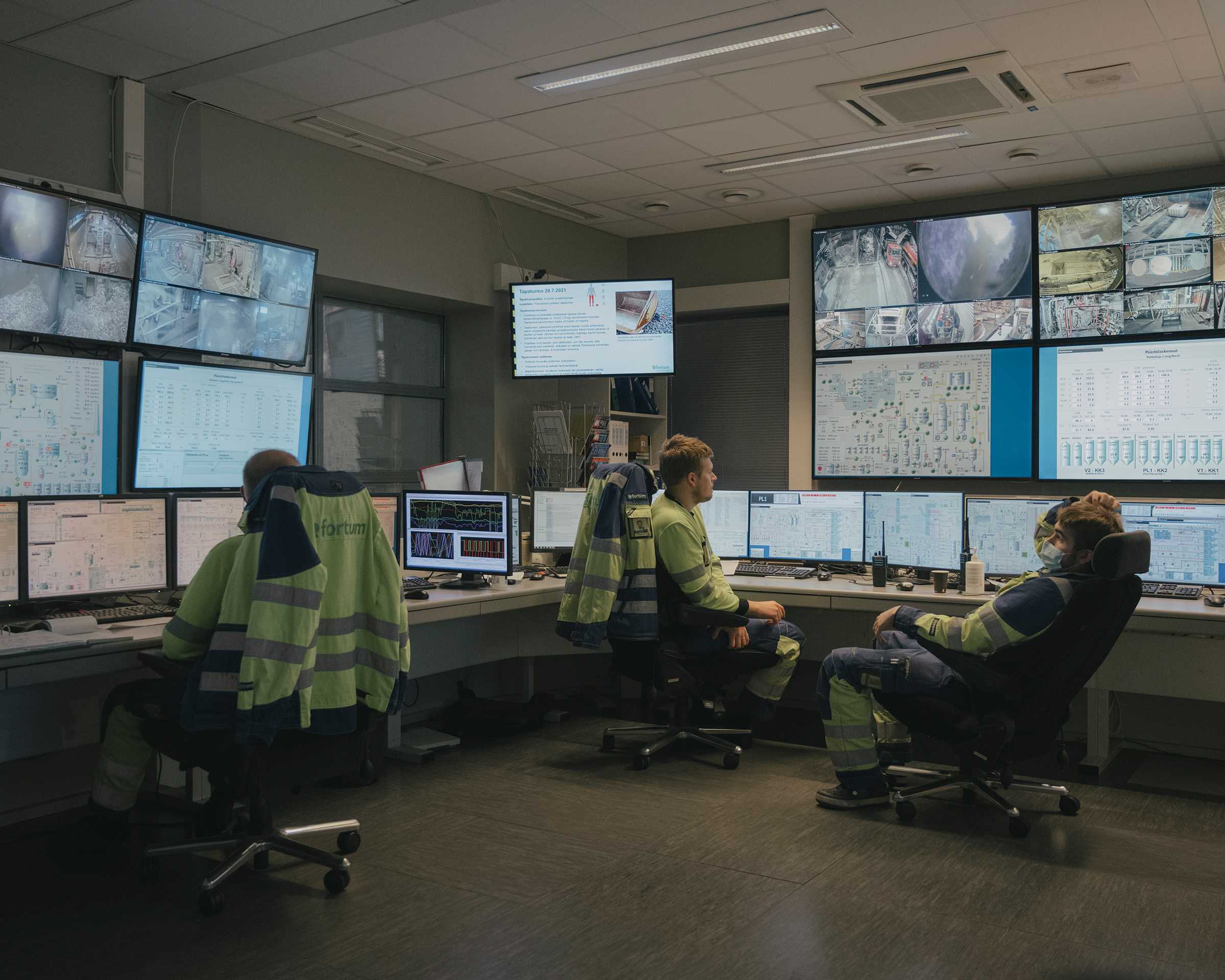
As natural resources diminish and the climate crisis grows more acute, the notion of a circular economy has been gaining traction around the globe. Most modern economies are linear—they rest on a “take, make, waste” model in which natural resources are extracted, their valuable elements are transformed into products, and anything left over (along with the products themselves when they are no longer useful) is discarded as waste. In contrast, a circular economy replaces the extraction of resources with the transformation of existing products and essentially does away with the notion of waste altogether.
Read More: Could Amsterdam’s New Economic Theory Replace Capitalism?
A growing number of governments, from the municipal to the international, have thrown their weight behind the idea. The E.U. launched its action plan for the transition to a circular economy in 2015, then updated it in 2020 as part of the Green Deal to include initiatives that encourage companies to design products—from laptops to jeans—so that they last longer and can be more easily repaired. In February, the European Parliament passed a resolution demanding additional measures that would allow it to adopt a fully circular carbon-neutral economy by 2050. Some member states, including the Netherlands, have also drafted similar plans at the national level.
Among them, Finland stands out for the comprehensiveness of its approach. Back in 2016, it became the first to adopt a national “road map” to a circular economy—a commitment it reaffirmed last year by setting targeted caps on natural-resource extraction. Like other nations, Finland supports entrepreneurship in creative reuse, or upcycling (especially in its important forestry industry), urges public procurements that rely on recycled and repurposed materials, and seeks to curb dramatically the amount of waste going to landfill.
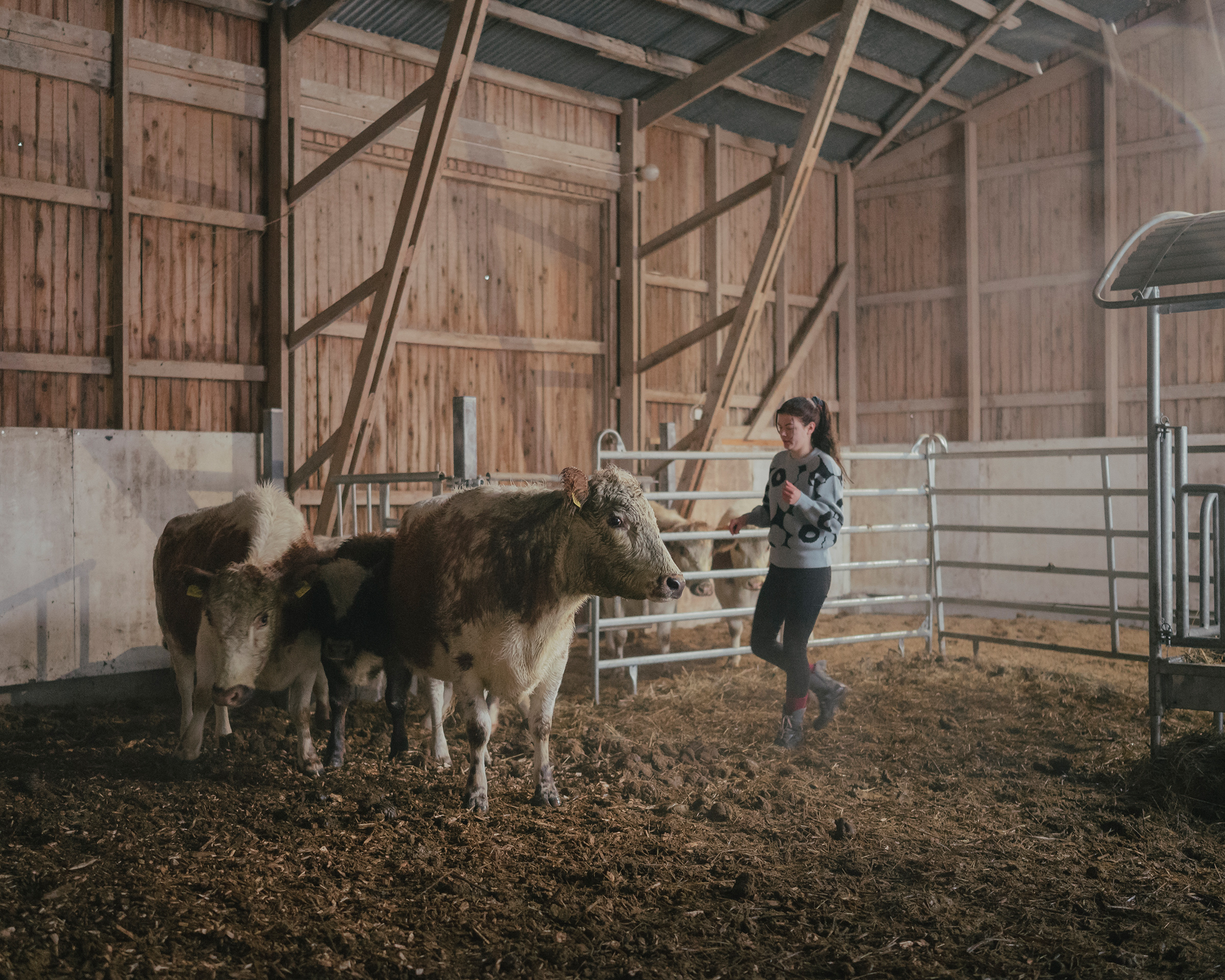
But from the beginning, the country of 5.5 million has also focused closely on education, training its younger generations to think of the economy differently than their parents and grandparents do. “People think it’s just about recycling,” says Nani Pajunen, a sustainability expert at Sitra, the public innovation fund that has spearheaded Finland’s circular conversion. “But really, it’s about rethinking everything—products, material development, how we consume.” To make changes at every level of society, Pajunen argues, education is key—getting every Finn to understand the need for a circular economy, and how they can be part of it.
A pilot program to help teachers incorporate the notion into curriculums in 2017 “just snowballed,” says Pajunen. “By the end of the two years, 2,500 teachers around the country had joined the network—far more than we had directly funded.”
Since then, studying the circular economy has taken on a life of its own, starting with the youngest. In December, Neulanen kindergarten director Liisa Woitsch sat on the floor with some of her young charges, a broken wooden chair and a large cartoon cutout of a fox. Unscrewing a dangling leg from the chair, Woitsch asked the children, “Do we just throw it away now, or can you think of anything else that can be done with it?” One boy clamored to the seat and, pounding rhythmically, declared it a drum. Another brought the detached leg to his lips. “It can be a trumpet!”

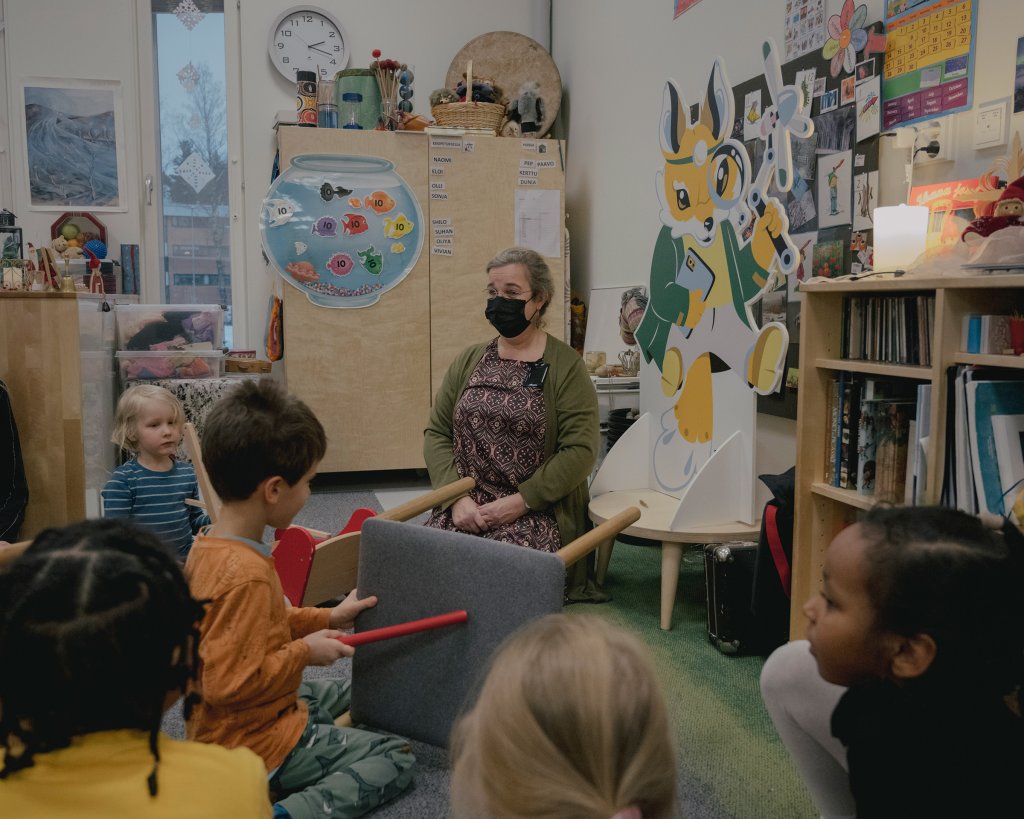
It’s an uplifting change from the catastrophe and dystopia that often characterizes education about sustainable development, says Anssi Almgren, who helped design the curriculum for the city of Helsinki. “Children have so many great ideas, and we wanted to enable them to think about solutions.”
In a nation whose education system, considered by many to be the best in the world, rests heavily on experiential learning (and not at all on homework, which is practically nonexistent), the solutions-based approach of studying circular economy adapts to all levels of formal education. In one online course developed for high school, for example, students engage in an advanced version of Woitsch’s kindergarten class, taking apart broken items like ballpoint pens or electronics and mulling over new purposes for their materials.
By the time kids reach university, their grounding in circularity is strong enough that they can apply the principle to advanced research. At Metropolia University of Applied Sciences, students collaborate on projects designed to solve real-world problems. One group on an engineering course spent the fall investigating how Helsinki could foster neighborhoods where individual blocks could—by establishing repair workshops, gardens and composting sites—build their own mini circular economies.
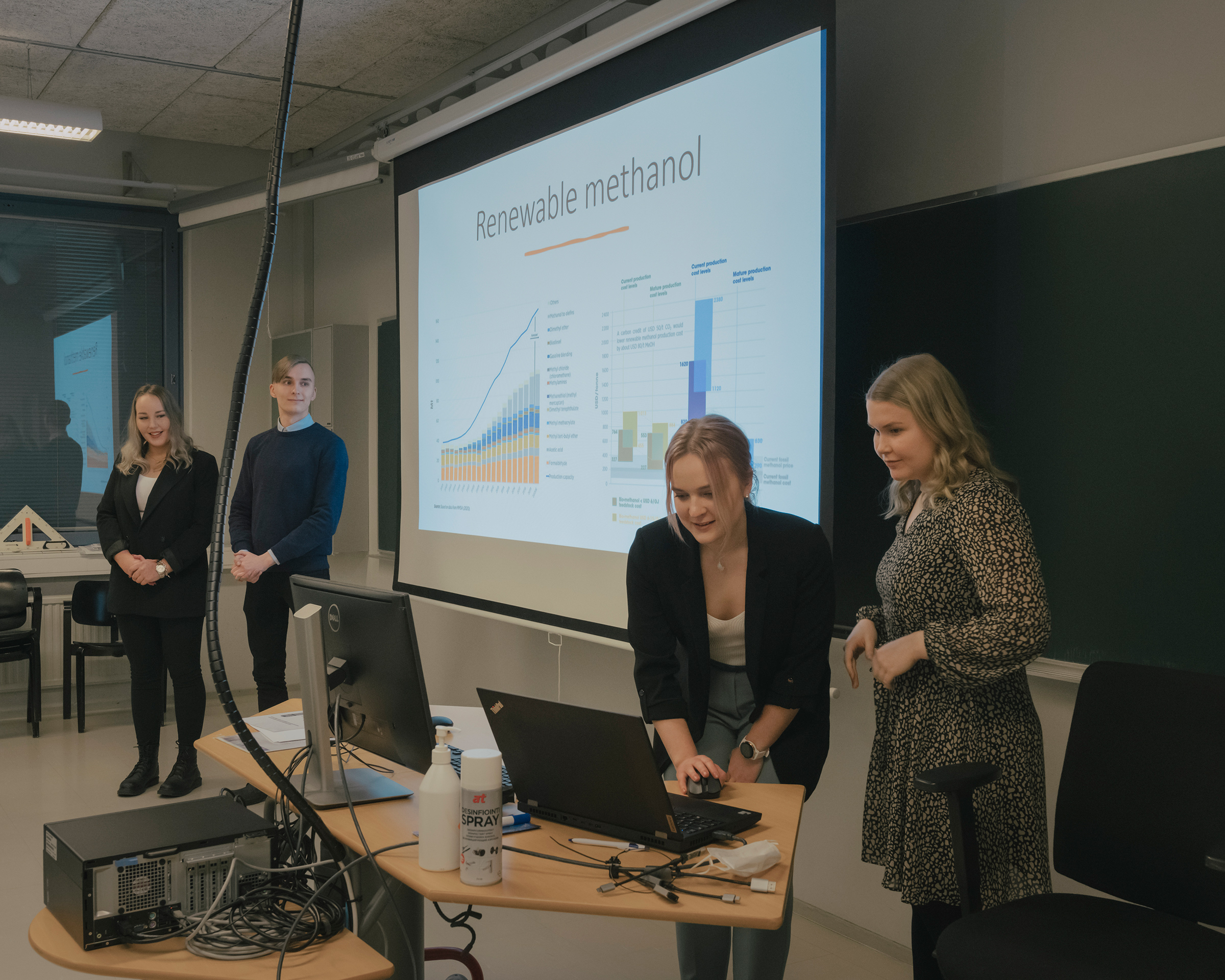
The concept is also making its way into adult education. In 2018 Marja Oesch was trying to figure out what to do with her life. She had grown up on a farm 88 km north of Helsinki, and wasn’t convinced that farming held much opportunity, either for herself or for the environment. “It was basically a monoculture,” the 26-year-old says of her family’s 100-hectare farm, where they primarily grew grain, having previously raised cattle. “The soil had become more compacted, and we were using more and more fertilizers. I could see the problem, but I didn’t know how to solve it.”
When she learned of a course in regenerative agriculture organized by an environmental NGO called the Baltic Sea Action Group, she enrolled. She soon realized she could help tackle the climate crisis and biodiversity loss on the farm itself.
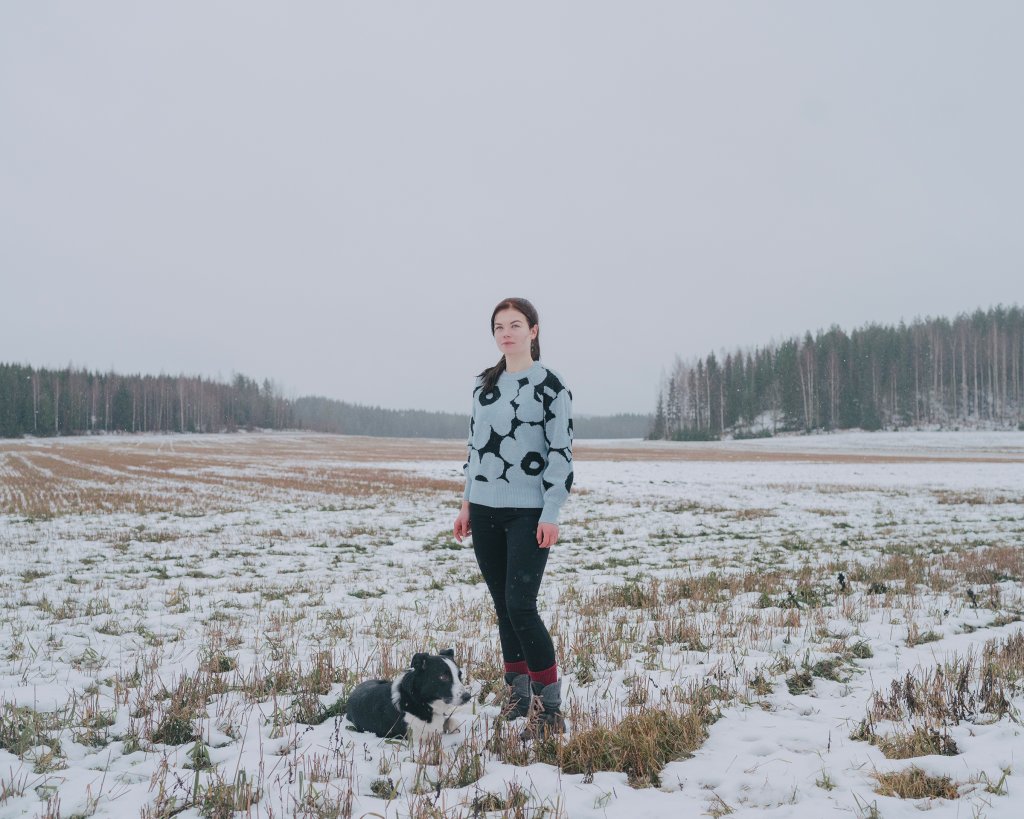
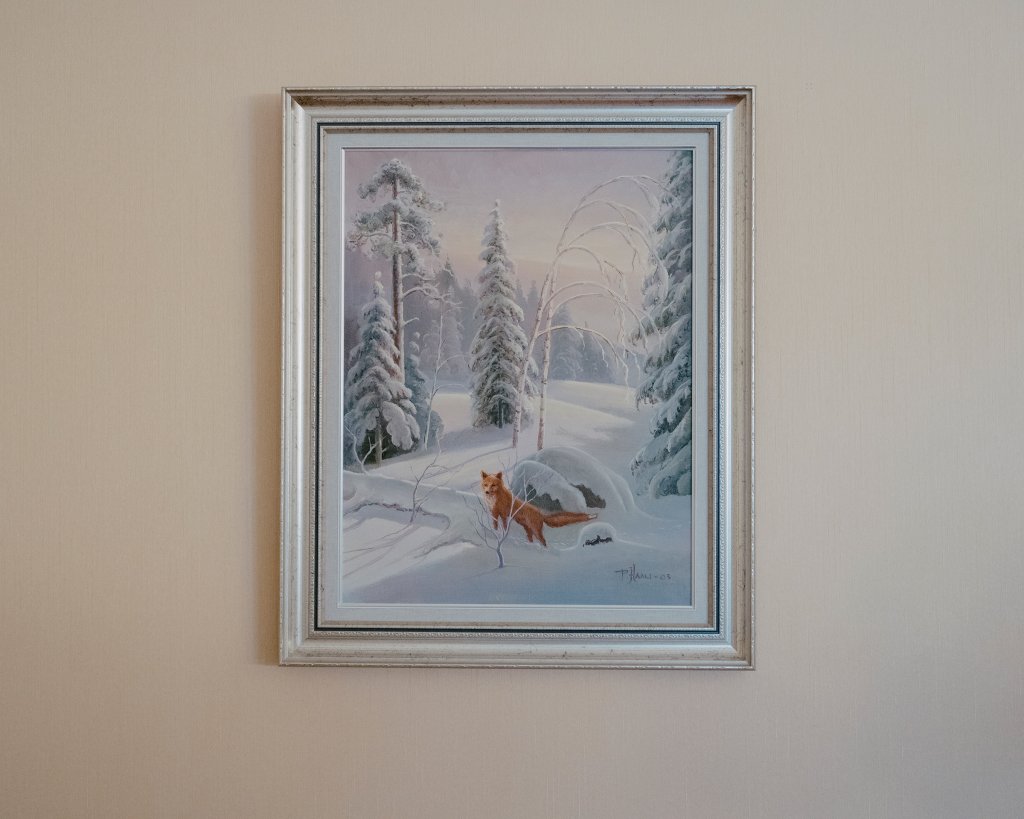
A year ago, she bought out her parents and began changing the farm’s model. She still grows wheat and barley, but when she plants those grains in the spring, she seeds them with 15 varieties of cover crops to help rebuild the depleted soil and support biodiversity on the farm. She’s also introducing new crops into rotation, and recently added six cows whose only job at present is to eat: by grazing and fertilizing the soil with their manure, they too contribute to the health of the land. “Before, I was only thinking about yield—how much can I harvest in this one field,” she says. But now her perspective has broadened to include putting back as much as taking out. “Every time I have to make a decision now,” Oesch says, “I think about how it affects the soil and the organisms in it, and down the line that will bring other changes that I think will make the farm healthier. But the most important change is your mindset.”
Is Finland as a whole achieving that particular transformation? By some measures, yes: a recent poll showed that 82% of Finns believe the circular economy creates new jobs, and several Finnish cities have developed road maps of their own. Its forestry industry has taken steps to reinvent itself, a key move as a full 28% of domestic energy consumption now comes from wood-based fuels. Renewables—including wood, though burning it does release carbon—surpassed fossil fuels for the first time in 2020.
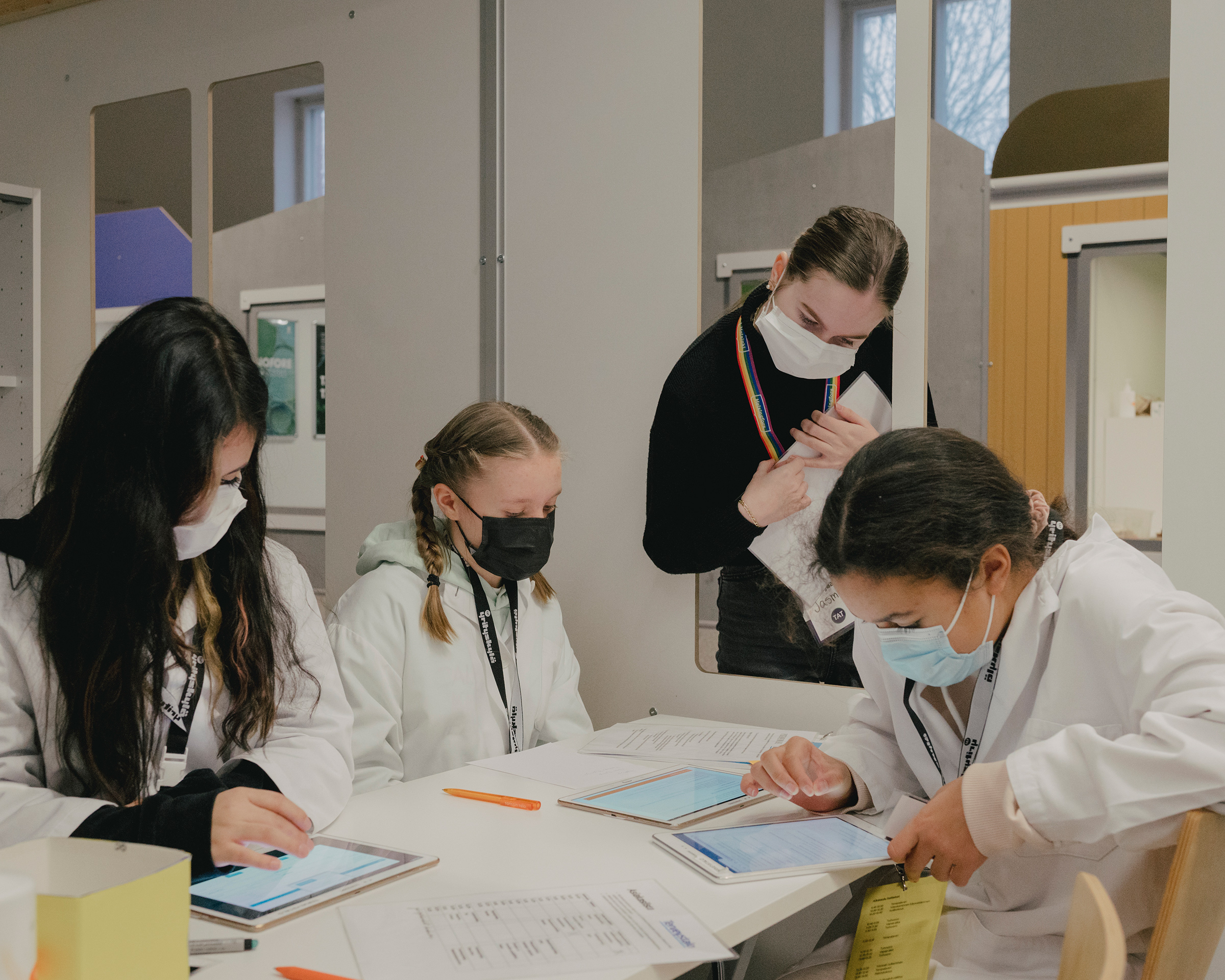
Meanwhile, the number of successful young companies employing circular measures seems to expand every month. Many are working to convert sidestreams from the forestry industry into new materials like bioplastics, paperboard and textiles. But in the birthplace of Nokia, just as many seem to be aimed at tech. Swappie, a company that refurbishes iPhones, for example, is one of Finland’s most successful recent startups. In 2016, its founders, then all in their 20s, embarked on a mission to make used phones—which then made up only 5% of the global market—as common as used cars (which make up 50% of all cars sold). “After researching the market, we realized that the main obstacle was quality,” CEO Sami Marttinen explains. “People didn’t trust the quality of refurbishers. So that’s what we built the company on.”
Swappie handles every step in-house at its Helsinki facility, from receiving the used phones to diagnosing and repairing them to sending out the perfectly functioning refurbished ones and marketing them through traditional advertising and a well-targeted influencer campaign. The company’s holistic approach is working: it has increased its revenue from half a million euros in its first year to 98 million in 2020, and augmented its capacity with a second factory in Estonia. Many of its 1,100 employees come from around the world, drawn, Marttinen says, “by the sense of purpose.” And although the company’s research suggests that many of its customers buy Swappies simply because they get guaranteed quality for a lower price, for some of its clientele that same sense of purpose has made owning a Swappie cooler than getting a new phone.
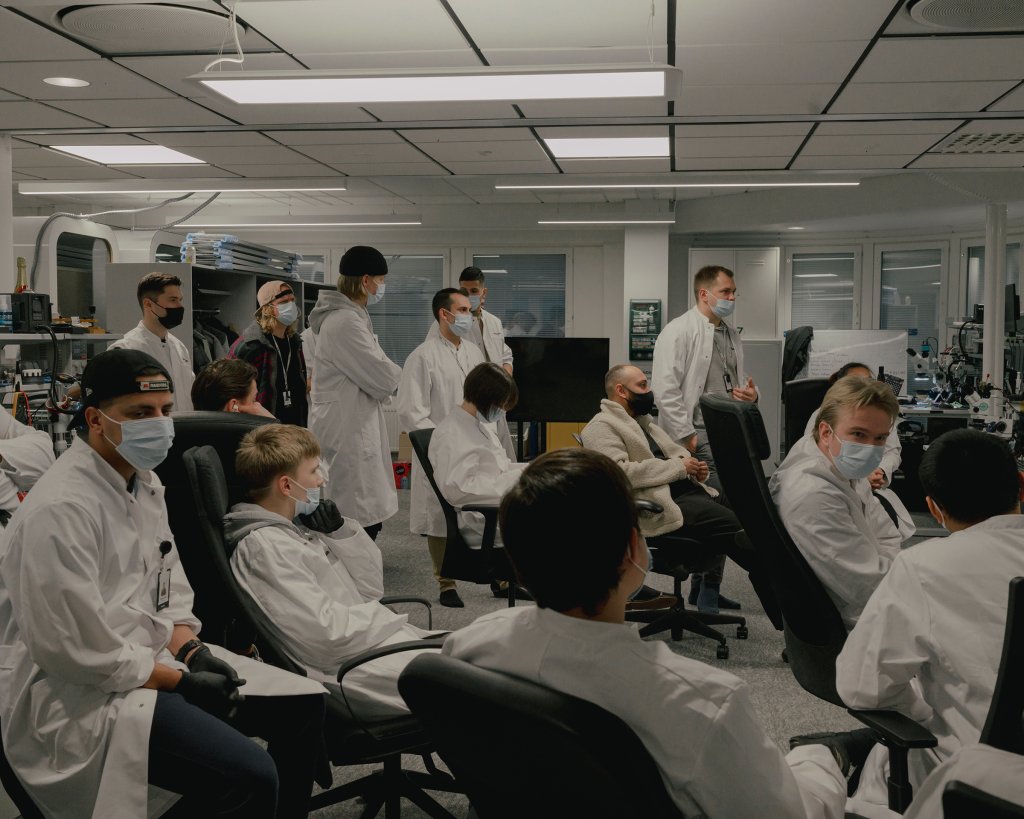
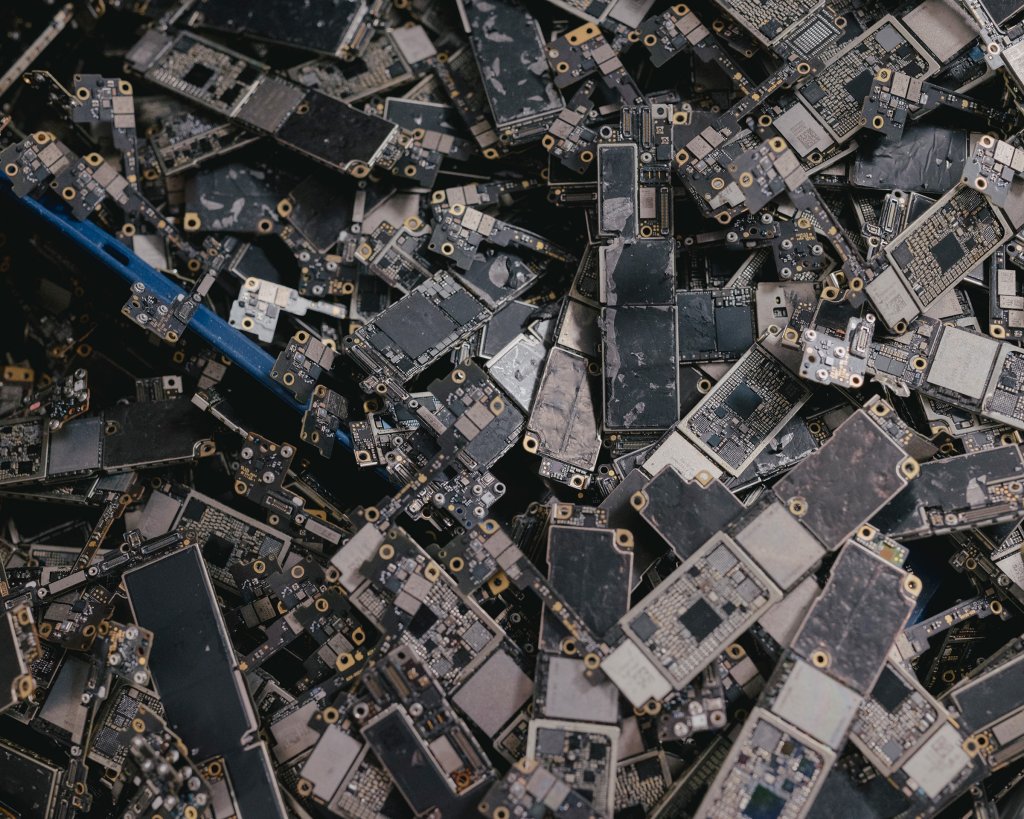
It’s not all small startups either. The state-owned Fortum—the country’s leading energy producer and, by revenue, Finland’s largest company—is already working within a circular model. It transforms waste into energy through incineration, as well as into new materials: discarded household plastic, for example, is processed at its plant in Riihimaki into clean pellets that can be remade into any kind of plastic.
The company currently is a major greenhouse-gas emitter, largely due to its fossil-fuel-energy subsidiary, Uniper, but is looking ahead to the endgame of the transition to a carbon-neutral economy. Once fossil fuels are phased out and replaced with renewables, Kalle Saarimaa, vice president of Fortum Recycling and Waste, explains, the raw materials for energy will no longer be scarce; sun and wind, unlike coal and oil, are free. But something that is abundant today—cheap plastic and other hydrocarbons made from petroleum—will then become scarce. “Where are those hydrocarbons going to come from when fossil fuels are phased out?” he asks. “A lot of people right now are working to replace them with bioplastics. But what happens to bio if you do that? There won’t be any trees left on the planet.” (Wood is a leading source of bioplastic.) Instead, the company is developing innovative technology to generate those hydrocarbons from the carbon dioxide emitted in the energy-production process. “We see it as the future of recycling,” Saarimaa says—“the way to get carbon circular.”
Finland still has a long way to go. Although the amount of waste going to landfill has decreased so dramatically in the past two decades as to be almost negligible, Finns are actually producing more waste per capita than they were a few years ago—they’re just turning it into something else. “In that sense, we are still living in the linear model,” says Sitra’s project director for circular economy, Kari Herlevi. “We’re better at recycling, but we have not been able to turn the tide fully.”
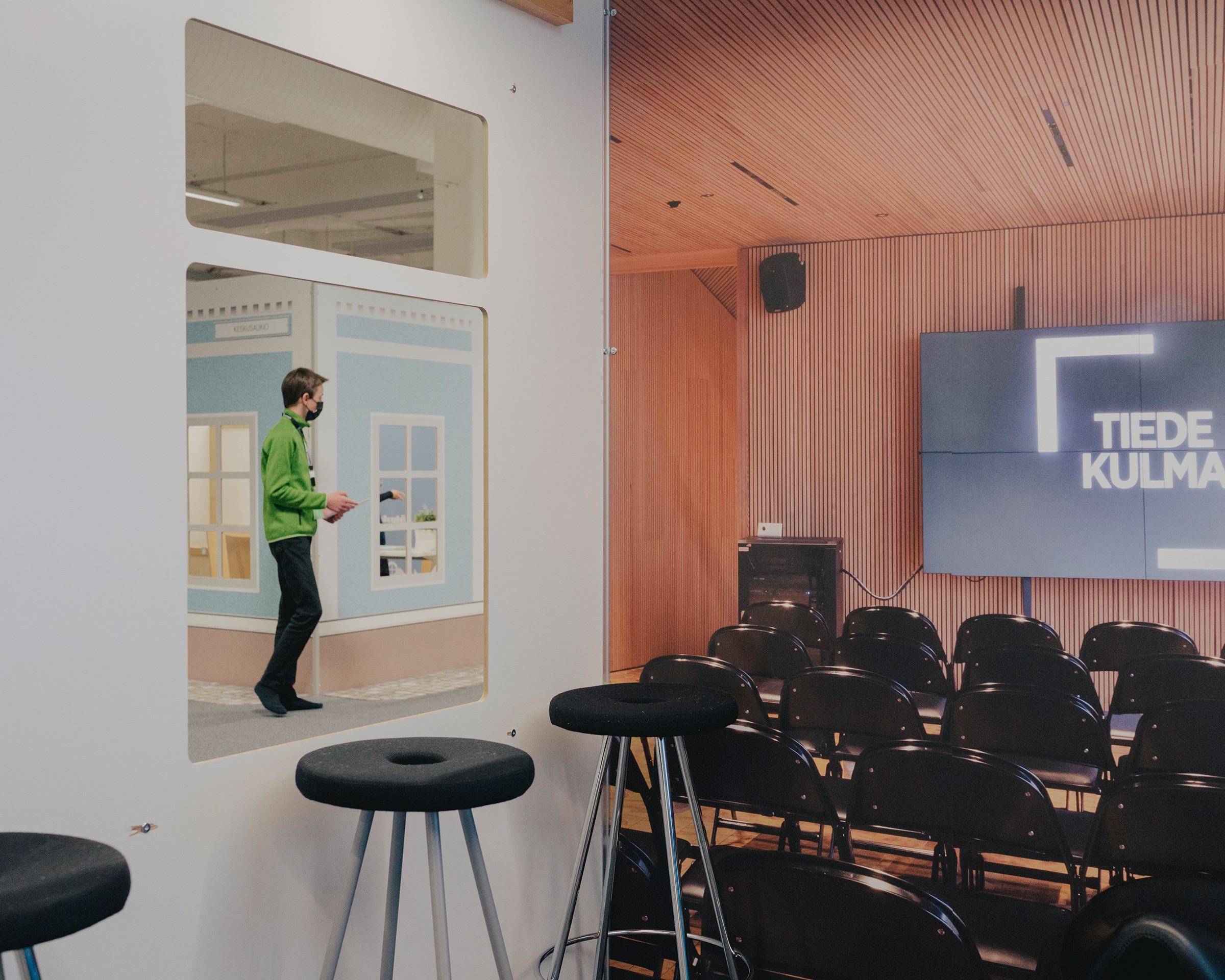
In downtown Helsinki, the three chef-owners of Nolla have discovered much the same. When they first opened the restaurant in 2018, they trumpeted its zero-waste philosophy, with drinking glasses made from elegantly repurposed juice bottles and a popular dip flavored with a syrup made from the kitchen’s vegetable trim. Cooks had to track any discard that couldn’t be repurposed—including food that came back from the dining room uneaten on each plate—before emptying it into the composter. But they discovered that the public wasn’t necessarily with them. “They would think that we were cooking with waste, or that we were going to feed them food that had gone bad,” co-owner Luka Balac says. “So now we’re just a restaurant. We are still doing all the same things, but if you don’t know about it”—gesturing around the packed dining room, Balac estimates that only about 60% of their guests do—“you’re just going to think you had a nice meal.”
Entrepreneur Amanda Rejstrom has seen a major recent shift toward the idea of a circular economy, but notes that older Finns can be more skeptical. “Finland was very poor well into the 1950s, but it developed very quickly after that,” she says, with generations of Finns focused on expanding industry. “It’s very hard for people to understand that their lives’ work, or the life’s work of their parents, could in any way be a bad thing.”
Rejstrom inhabits the dilemma: she sits on the board of her family’s company, which produces injection molding. But she is also the founder and CEO of Spark Sustainability, which a few months ago launched an app called Carbon Donut. It allows users to track their carbon footprint, tailors suggestions to them for how to curb it, and links them to circular businesses that can help. The app so far has 15,000 users, most of whom, she says, are urban, highly educated and in their 20s. “They are the generation that learned about circular economy and climate change and all the other environmental problems in school, and have a different approach to nature than older generations who saw it more in terms of its monetary potential.”
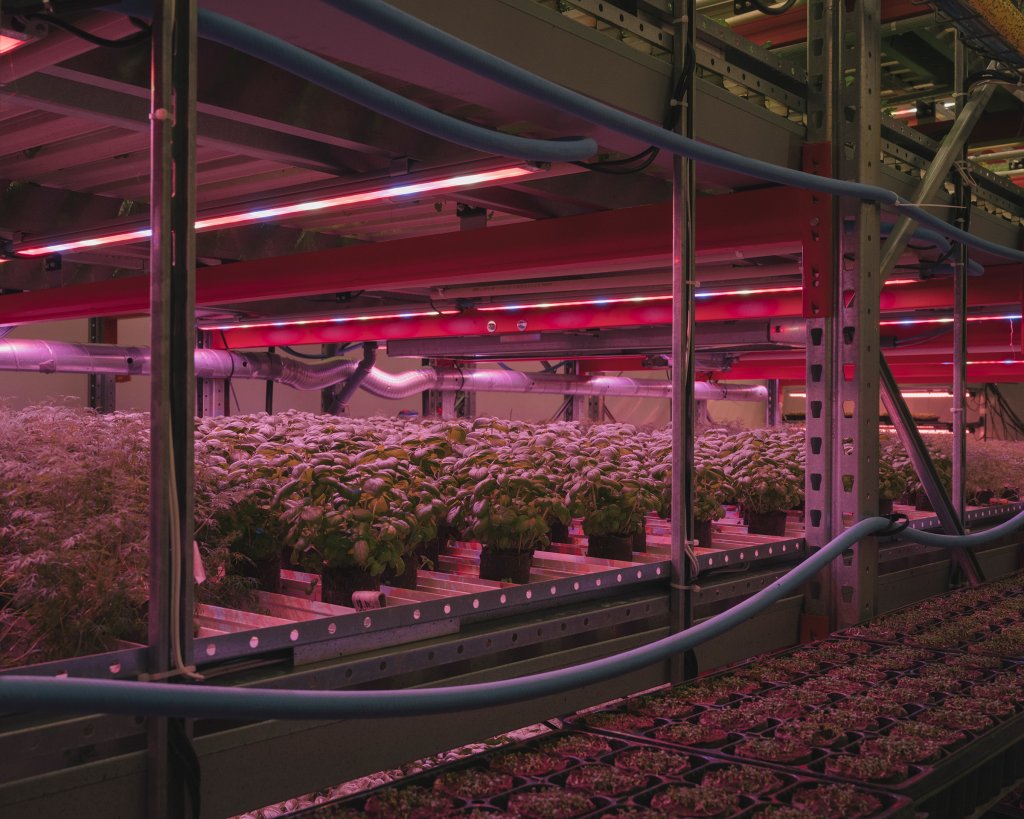
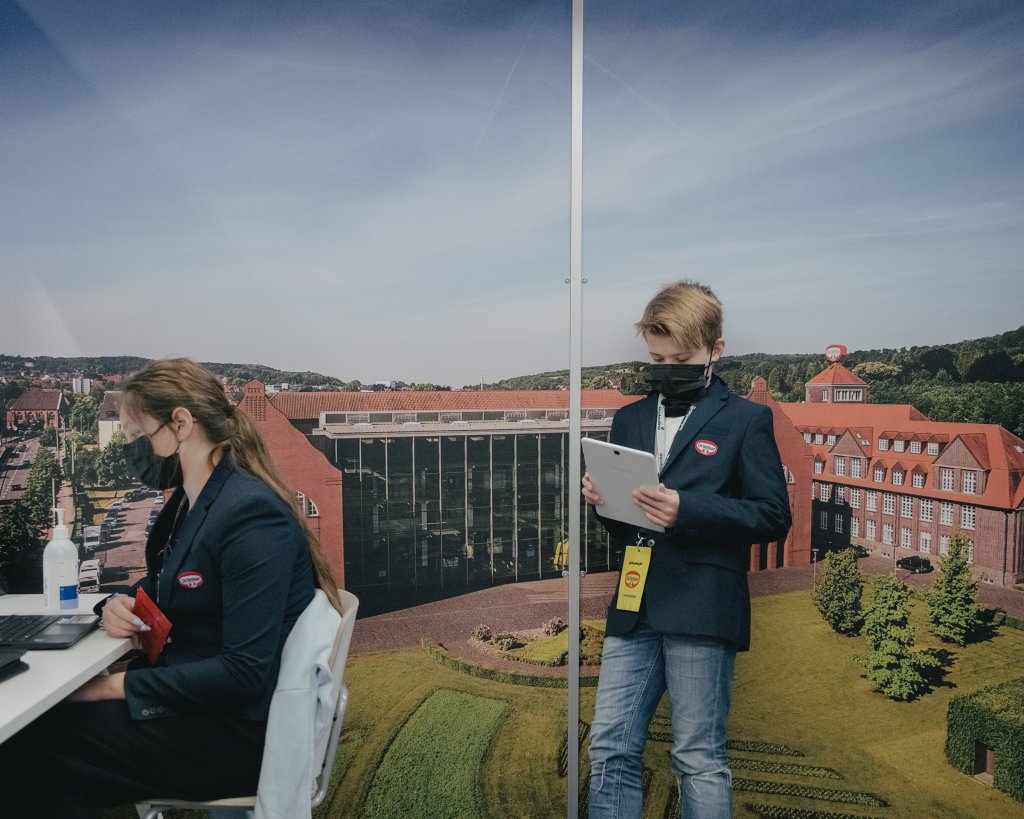
Finland is seeking to position itself as a model for other countries; to that end, Sitra has published guidelines to help other nations develop their own circular-economy road maps, and has begun collaborating with the African Development Bank to further steps toward circularity across that continent. But its unique combination of small population, political will, a muscular entrepreneurial culture and that strong education system suggests that any country seeking to follow in its footsteps is going to need to look beyond merely phasing out landfills and funding cool startups to a bigger, more holistic picture. “From the feedback we’ve received, it’s clear that the education part resonates internationally,” says Sitra’s Herlevi. “And from the beginning we have thought of it as the backbone of our strategy. But [education] is part of the overall Finnish way of operating, and it’s not like you can just take it and implement it as a separate thing.”
Nor is it a strategy that works overnight. Even in Finland, the focus on changing a society by educating its young takes time. It worked that way for Tina and Karin Harms. A lawyer who identifies herself as “very aware of sustainability issues,” Tina, 47, was unfamiliar with the term circular economy, even though, as someone who restores furniture as a hobby and has long tried to reduce her family’s consumption, she was already practicing it in some ways.
Her middle child Karin, age 19, on the other hand, says she has been familiar with the circular “practically all my life.” She first learned of it in primary school and had the message reinforced in middle school—her class went to Yrityskyla, for one—and it forms part of the curriculum at her current high school. Like most of her friends, she has a refurbished phone and buys most of her clothes at secondhand shops. She’s also vegan, and has persuaded the rest of the family to recycle. “We started five years ago, and before that we weren’t doing it,” Karin says. “But then I said we really need to, we all need to contribute to fighting climate change.”
Tina recalls balking at first. Although the family did recycle its newspaper and bottles, separating plastics required an extra effort that she found inconvenient. But today, they have what she laughingly describes as “virtually a plastic recycling center” in their basement. “I think that if you have a teenager with very strong feelings about something,” she reflects, “it’s very demotivating if we older ones don’t show that we’re ready to make the extra effort to change.”
—With reporting by Eloise Barry/London
More Must-Reads from TIME
- Why Biden Dropped Out
- Ukraine’s Plan to Survive Trump
- The Rise of a New Kind of Parenting Guru
- The Chaos and Commotion of the RNC in Photos
- Why We All Have a Stake in Twisters’ Success
- 8 Eating Habits That Actually Improve Your Sleep
- Welcome to the Noah Lyles Olympics
- Get Our Paris Olympics Newsletter in Your Inbox
Contact us at letters@time.com
